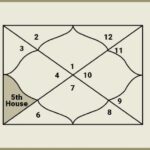Having a dedicated space for meditation can help deepen your practice and allow you to connect more deeply with yourself. Setting up a meditation space or “sacred space” shows your commitment to the practice and helps put you in the right mindset when you sit down to meditate. A meditation space doesn’t have to be large or elaborate. Even just a corner of a room with a few special objects can serve as your sanctuary. In this article we talk about How to Create a Sacred Space for Meditation In 2024.
Table of Contents
Choose a Quiet Location
Find a quiet spot in your home that you can dedicate to meditation. Many people use a corner of their bedroom, a spot in the living room, or a spare room if they have one. You may want to face East or North if possible, as these directions are thought to be more auspicious in many spiritual traditions. Make sure your meditation spot is away from noisy areas like a TV room or kitchen. Find a quiet spot for meditation, away from distractions.
Declutter and Clean the Space
Start by thoroughly cleaning and decluttering the area you have chosen. Remove any clutter or random objects. Vacuum the floors and dust the surfaces. You want your meditation space to have a simple, clean, and clear energy. This helps clear your mind when you sit down to meditate. If the space feels chaotic, that chaos can seep into your meditation.
Set Up Seating
Proper seating is essential for meditation. You will likely be sitting still for an extended period, so you want seating that is both comfortable and provides good back support. The traditional posture for meditation is sitting cross-legged on the floor with your spine straight. However, this position can be uncomfortable or even impossible for some. Don’t force yourself into a challenging posture or you may end up distracted by discomfort.
If sitting on the floor doesn’t work for your body, try using a:
- Meditation cushion – Supports your posture and makes the floor more comfortable.
- Chair – Choose one with good back support or use pillows behind your back. Keep your spine straight.
- Meditation bench – Allows you to kneel which takes pressure off your hips and knees.
No matter what seating you choose, the most important thing is that your spine is straight and your body is relaxed but alert. This allows you to breathe deeply and focus without struggling with your posture.
Add Special Objects
Personalize your meditation space with objects that have a spiritual meaning for you or represent qualities you want to cultivate through meditation like peace, joy or gratitude. Some ideas of special objects to include:
- Crystals – Clear quartz, amethyst, citrine and rose quartz have peaceful, spiritual vibrations.
- Statues – Buddha, Ganesh, Quan Yin and other spiritual figures inspire reverence.
- Plants – Live plants like jade or aloe vera purify the air.
- Flowers – Fresh, dried or silk flowers add beauty. Choose flowers with spiritual meaning to you like lotus or orchids.
- Candles – Candles represent the light within us. Use soy or beeswax candles.
- Incense – Incense like sandalwood and cedar have a calming scent. Use natural incense or an essential oil diffuser.
- Inspiring Art – Frame spiritual affirmations, mandalas, nature photos or spiritual imagery.
These special objects serve as focal points during meditation and remind you that you are in a sacred space. Arrange them aesthetically on shelves, end tables or fabric pouches in your meditation area.
Use Comfortable Lighting
The lighting in your meditation space should be soft and comfortable. Harsh overhead lighting can feel disruptive during a quiet meditation session. Consider using:
- Salt lamps – These lamps emit a soft orange glow that is very relaxing. The Himalayan salt is said to purify air.
- Natural light – Sit near a window where you can benefit from daylight during the day. Draw curtains at night.
- Candles – Candles create a serene environment. Be sure to blow them out when you leave the space.
- String lights – Fairy or paper lantern lights create a peaceful glow.
The goal is ambient, calming lighting that allows you to meditate with your eyes open or closed without visual distractions.
Add Textiles & Cushions
Pillows, blankets, yoga mats and other textiles help make your meditation area cozy while also damping sound. This adds to the quiet, tranquil environment.
- Yoga mat or rug – Place your meditation seat on a supportive surface. The cushioning makes hard floors more comfortable.
- Blankets & throws – Drape these over your seat or legs to stay warm during meditation.
- Cushions – Use floor cushions, pillows or bolsters to support your posture.
- Eye pillow – Place this over your eyes during lying down meditations. The light pressure is relaxing.
Use natural fiber textiles like cotton, linen and wool in peaceful colors like cream, light blue or sage green.
Play Calming Music (Optional)
Some people enjoy meditating with soft music playing in the background. Instrumentals or music with chanting vocals works best. The music should relax you without demanding too much attention. Nature sounds like ocean waves or forest sounds are also a nice touch. Not everyone will want music during meditation, so consider this optional. Having a space that is quiet enough to hear your own breathing is ideal.
Keep it Simple
While creating a beautiful space is enjoyable, don’t go overboard. A meditation space should remain simple and decluttered. Too many objects can become visual distractions during your practice. Find a balance between aesthetics and simplicity by choosing just a few meaningful items as focal points. The space should feel clean, tranquil and sacred.
Make it Yours
There are no hard rules on what you need to create a meditation spot. Do what feels meaningful and inspiring to you personally. Think about the sensory environment you want – sights, smells, textures and sounds that will put you at ease. Adjust and tweak your setup until your sacred space feels just right. The process of designing it mindfully is part of what makes it special.
Develop a Ritual
Once your meditation area is complete, establish a ritual around using it. This might involve lighting a candle at the start of each session and blowing it out at the end. You may bow or ring a bell to signify entering this sacred place. Rituals cement the idea that meditation time is special. They also signal to your mind and body that it’s time to relax, turn inward and meditate.
A dedicated meditation space, no matter how modest, encourages the habit of regular practice. When you see your special spot, you’ll feel drawn to spend time there. Adjust the space as needed so it remains a personal sanctuary that supports your evolution. Most importantly, allow your meditation practice to infuse the room with serene, compassionate and mindful energy. I sincerely hope you find this “How to Create a Sacred Space for Meditation In 2024” article helpful.

Arjun Patel holds a Master’s degree in Gemology and has over 15 years of experience in gemstone studies and crystal healing. As the lead writer for GemsYogi.com, Arjun is dedicated to sharing his extensive knowledge of gemstones and their healing properties. His clear and insightful articles are designed to help readers explore the mystical world of gemstones and understand their unique energies.
Connect with Arjun on social media: Facebook, Instagram, Pinterest











